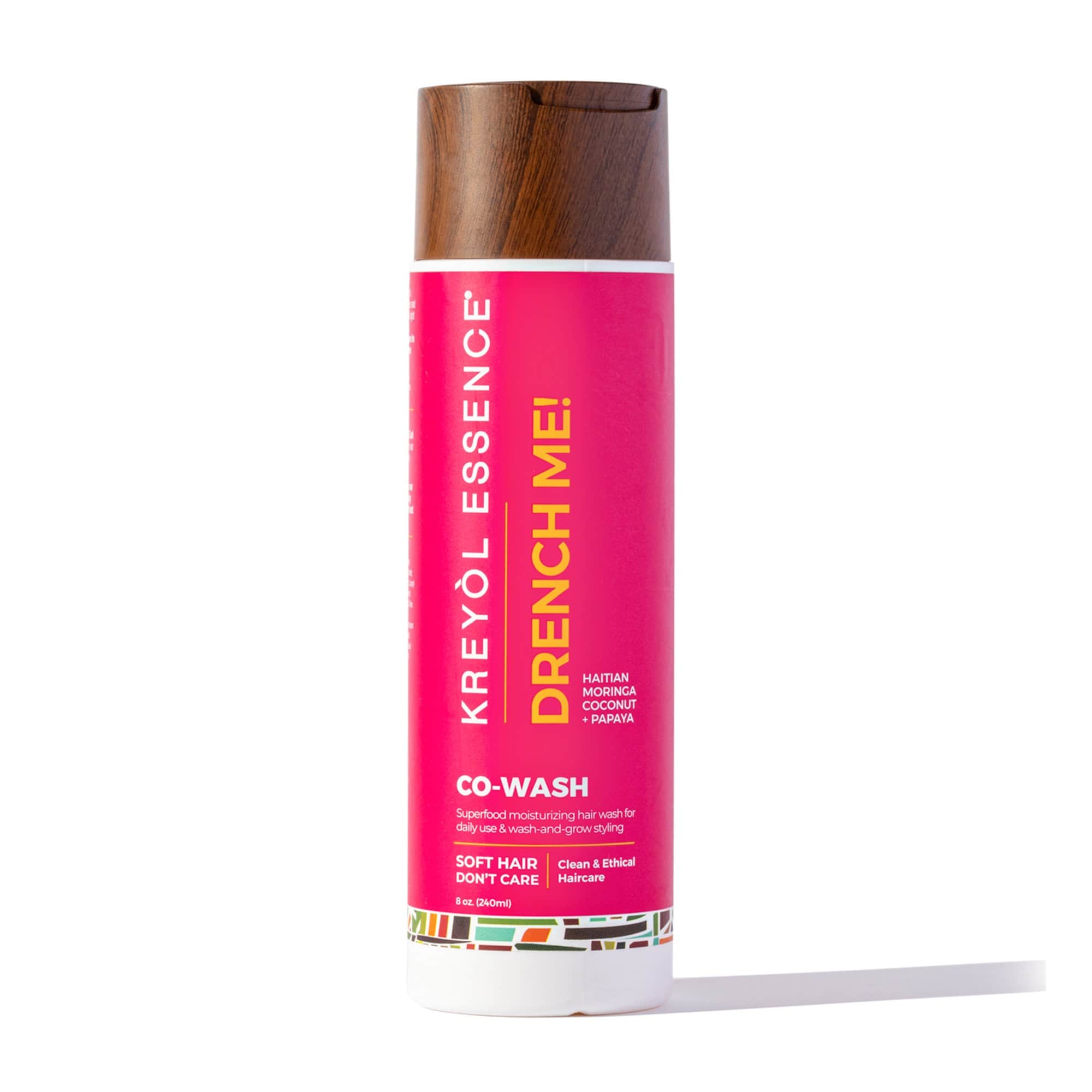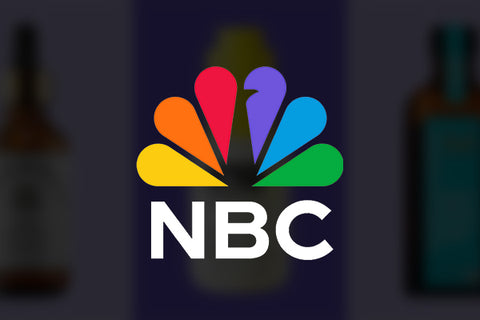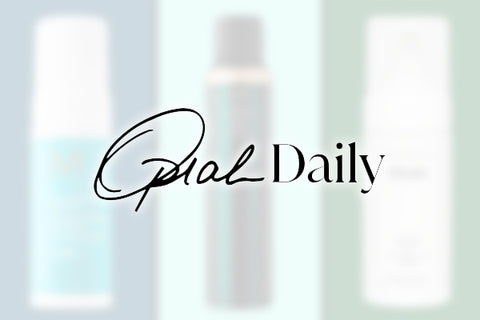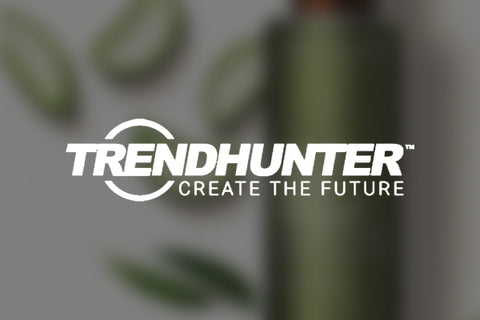News & Press
Coveteur: Intimidated By Hair Oils? Here’s How To Use Them Without Looking Greasy

Of the hundreds of hair products available to beauty consumers, oils are hands-down one of the trickiest to use correctly. Not only do they have a multitude of benefits (prepare to become a devotee of the scalp massage), but they can also create a range of styles, from a slicked-back bun to a crunch-free beach wave. Picking the right one depends on everything from your texture and thickness to porosity and damage level. So when you’re faced with options like coconut, argan, castor (among many, many others), where do you begin? And of course—how do you avoid looking greasy?
Pre-Shower Oil Treatments
According to stylist David Lopez, recent developments in oil formulations mean that pretty much everybody can benefit from using one for your hair, especially as a treatment to promote hair health, which should be addressed before you start looking for products to style it. And although you might assume that if you have a naturally oily scalp and hair, you should avoid using oils altogether, he assures us that that is not the case.
“We need to remember the scalp is kind of like an extension of the skin on your face,” he says. “If someone has oily skin and [they] keep stripping [their] skin, if they don’t replace that moisture, the body is going to want to replace that moisture and pump out more oil. The balance of oil production is completely off. Someone who has an oily scalp could benefit from a scalp oil treatment once or twice a week.”
He swears by castor oil for promoting scalp health—he’s even a fan of mixing it with peppermint, tea tree, or rosemary essential oils to encourage hair growth, or lavender as a natural antiseptic. “[If you] work out a lot, you can use oil like you would an oil cleanser [on your face] to double-cleanse, particularly at the temples, the nape [of the neck], and the crown. It’s essentially a slowed-down version of how you shampoo your hair.”
Stylist and brand founder Charlotte Mensah is also a proponent of the scalp massage with hair oil, which she says increases circulation and stimulates blood flow to the scalp. “[Scalp massage also] helps to provide nutrients to the scalp, hydrate the hair, and prevents frizz,” she says. Mensah also explains that using oil on an occasional basis can improve your scalp health—especially now, in the winter, when your skin and scalp are lacking moisture—and if you’re on the oily side, to massage prior to your shower and then wash out the oil with your favorite shampoo or scalp-cleansing product. Trust us—there’s nothing like a long, leisurely scalp massage to make your stressors feel very far away.
Lopez even adds a few drops of his favorite oils to his conditioner. “I’ll get a little bit more slip out of the conditioner,” he says. “It’s like a little homemade hair mask, [with the] added benefit of moisture and slip.”
Post-Shower Treatment & Styling
Oils also have their place in promoting the overall health of your hair after you get out of the shower, especially for thicker, curly and coily textures. Lopez is a fan of using oils to “provide lubrication for the strands and help reflect some light so it gives it more shine,” but won’t go so far as to say oils can considerably moisturize your hair. Your hair may feel softer and more hydrated after using oils, and while they can replace lipids and nourish your hair, they only create a barrier to seal in moisture—they do not, in fact, moisturize your hair.
Despite not being able to impart extra moisture, Mensah still recommends oils for highly textured hair, especially her signature Manketti oil. “[It’s] unbeatable when it comes to coils and kinks. It’s loaded with vitamin E and is high in polyunsaturated fatty acids, which act as a barrier to help protect moisture from escaping from the hair for longer.”
For those with mid-length hair with looser curls, she suggests jojoba and argan oils, which are still loaded with beneficial fatty acids and vitamins. “[They’re] perfect for nourishing mid-length and the ends of loose curls and waves.”
And if your hair is thinner or straight, yes, you can still use oils to tame flyaways and nourish your hair—a mist product (Mensah suggests her Manketti Oil Finishing Mist) will assure that you’re not overdoing it with the application or weighing down your hair.
Regardless of texture or thickness, oils are particularly beneficial for people with high-porosity hair, which is when your hair cuticle is more raised. That means your hair can absorb moisture easily but won’t retain it, which results in dry and brittle hair that is prone to more breakage and frizz. Styling your hair with an oil will seal in that moisture and give you a satiny finish (if you’re doing a blowout or silk press) and decrease frizz if you’re wearing your natural curls.
How Much Is Too Much?
If you’ve gone to all the trouble to massage your scalp and cleanse your hair, the last thing you want is to end up looking greasy. So how do you avoid that look while still getting all the nourishing, smoothing, and frizz-reducing benefits of oils? “I feel like people use too much of it—they just put a big glob. A little bit goes a really long way, so sometimes even half of a pump from the bottle is going to be just fine. Always start with less, and build it up as you need it,” says Lopez.
Where you start with the application is also crucial for keeping your hair looking silky rather than like an oil slick. Lopez says that even if you’re seeing the bulk of your frizz at the crown of your head, don’t apply the oil there to start. Instead, when your hair is still damp, divide your hair into sections, begin at the ends, and work your way up to the roots with whatever amount of product is left on your hands. Just remember—heavier oils, like coconut and olive, will leave a thicker coating on each hair strand, so when in doubt, start with a dime-sized amount and increase it depending on how thick or dry your hair is.
“A lot of people get scared [of oils] and they’re like, Oh, I used a hair oil, but my hair looks greasy right away,” says Lopez. “If you just put a little bit, maybe one pump, and really squeeze it into the ends and run it through the ends, that will bring the hair together. Most people are looking for a little bit of shine, a little bit of static control, and to make the hair feel a little bit more pulled together. You don’t need that much to do that.”
Of course, the amount of product that is right for you depends entirely on your texture and thickness. Says Mensah, “Thick, coily hair needs more to coat and absorb for a smoother cuticle.” Finding the balance of the right product and the correct amount just takes a bit of practice.
Added Oil Benefits
Many oils also protect your hair from heat damage, making it an ideal pre-treatment for the rest of your styling routine, but that doesn’t mean you need to increase the overall amount of the oil. As Lopez suggests, start with half a pump, divide your hair into sections, and start applying the oil with your hands starting at the ends. Then move on to blow-drying your hair with your preferred attachment.
If you’re partial to air-drying rather than using a blowdryer, applying the oil when your hair is still wet will reduce frizz and help boost your overall shine. Mensah also suggests using an oil to seal the ends of your hair after a twistout or braid. “Thick, coily hair needs more to coat and absorb for a smoother cuticle,” she reminds us.
And if you still want to use other products, like gels or creams, to style your hair, just remember the liquid-oil-cream method (or LOC): use a liquid or water-based product to hydrate your hair, seal in the moisture with an oil, and then close the hair cuticle with a cream to prevent moisture loss and add that hold and definition for your texture.












